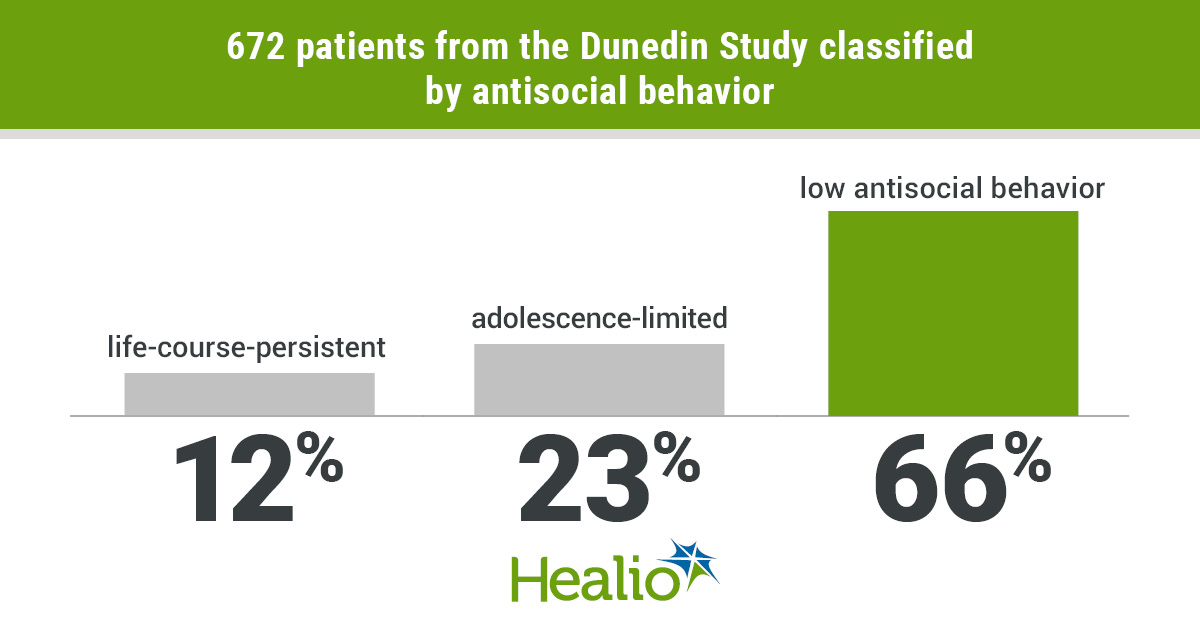Life-course-persistent antisocial behavior associated with differences in brain structure

Individuals who exhibit life-course-persistent antisocial behavior have characteristic differences in brain structure, according to results of a study published in The Lancet Psychiatry.
“There is clear heterogeneity among offenders,” Christina O. Carlisi, PhD, of the division of psychology and language sciences at University College London, told Healio Psychiatry. “The majority of people who break the law did not have notable differences in brain structure. Only the small minority of those who show antisocial behavior throughout their lives, from childhood well into adulthood, did have differences in brain structure.”
Carlisi and colleagues noted that the developmental taxonomy theory of antisocial behavior outlines life-course-persistent and adolescence-limited as the two prototypes of antisocial behavior. Prior studies in population-representative samples estimated life-course-persistent prevalence at less than 10%, whereas estimates placed adolescence-limited at 25%. Thus, the developmental taxonomy theory has been influential in guiding juvenile justice policies and early-years prevention, namely because this taxonomy led to DSM-classified subtypes of childhood vs. adolescence-onset conduct disorder.
To characterize features of brain structure associated with these two behavioral trajectories, the researchers collected structural MRI data from participants aged 45 years who were included in the Dunedin Study. This study was a population-representative longitudinal birth cohort of 1,037 individuals born in New Zealand between 1972 and 1973. Carlisi and colleagues looked specifically at those who had participated in the first assessment at age 3 years. Participants of the Dunedin Study underwent MRI and had been subtyped as exhibiting life-course-persistent, adolescence-limited or no history of persistent antisocial behavior based on self- and informant-reported conduct problems from ages 7 years to 26 years.

Carlisi and colleagues found that of 672 participants whose data they analyzed, 80 (12%) had antisocial behavior classified as life-course-persistent, 151 (23%) as adolescence-limited and 441 (66%) as low antisocial behavior. Those on the life-course-persistent trajectory had lower mean cortical thickness and a smaller mean surface area compared with those in the low group. Moreover, the life-course-persistent group had reduced surface area in brain regions associated with executive function, affect regulation and motivation. However, the researchers did not observe widespread differences in brain surface morphometry for the adolescence-limited group compared with either the life-course-persistent or non-antisocial behavior groups.
“These findings speak to the idea that not all young offenders should be tarred with the same brush; individual development can be one driver of repeat offending, but we must also appreciate that this is not the case for all juvenile offenders,” Carlisi said. “We are not able to make causal claims about whether the brain differences we observed were inherited and precede antisocial behavior, or whether they were a result of a persistently antisocial lifestyle, but we are adding another piece of evidence at the biological level to the idea that there may be differences in the small group of individuals who persist with antisocial behavior throughout their lives.” – by Joe Gramigna
Disclosures: The authors report no relevant financial disclosures.
